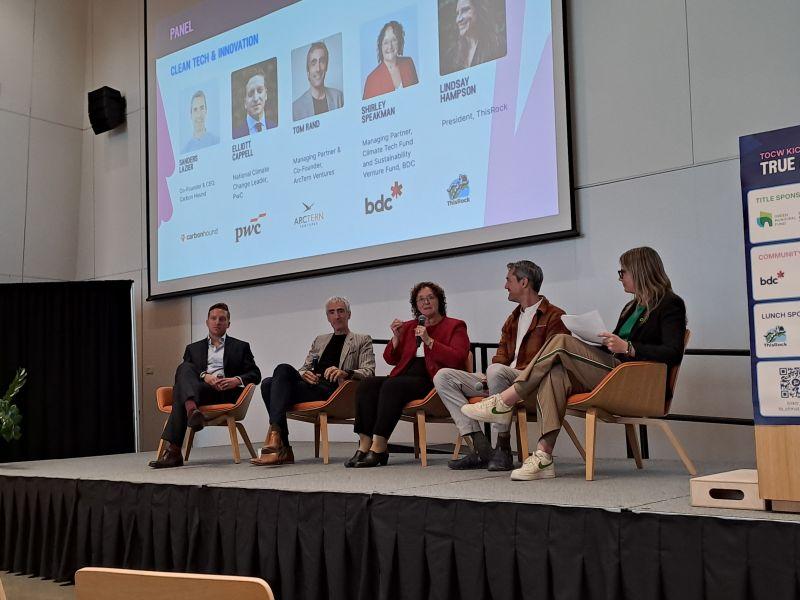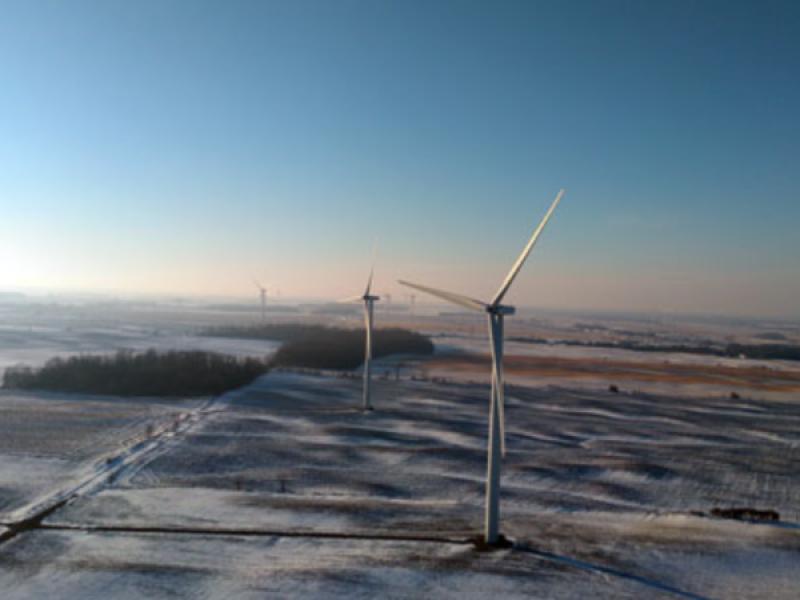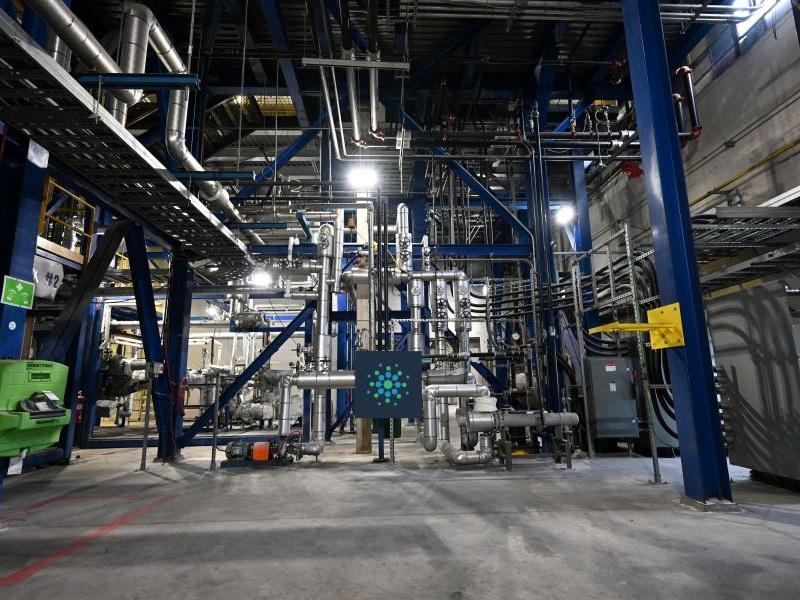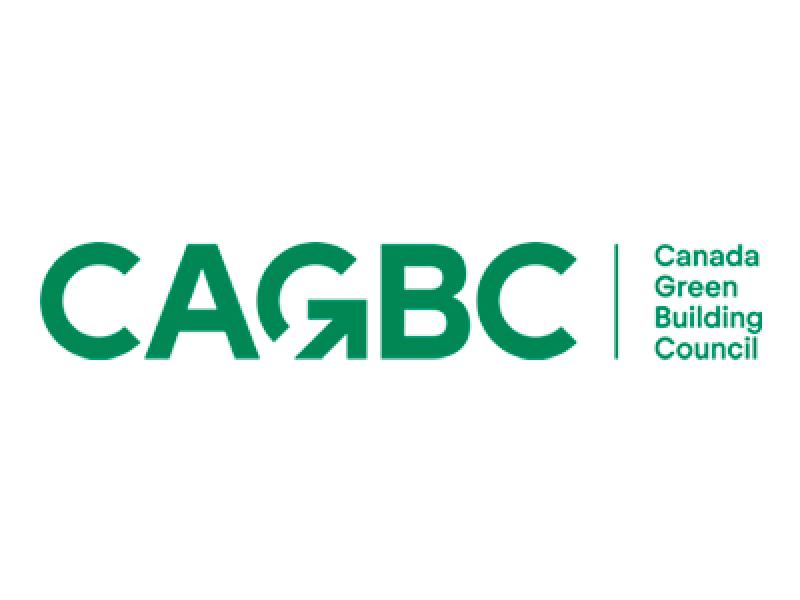
Edmonton-based Aurora Hydrogen plans to open a 200-kilogram per day demonstration facility just outside the city later this year to showcase its microwave-based method of hydrogen production.
The company recently received $3.9 million in funding from Sustainable Development Technology Canada (SDTC) and $2 million from Alberta Innovates.
Andrew Gillis, Aurora Hydrogen’s CEO, described his company's innovation. “The analogy I draw is, you put your cold cup of coffee in the microwave, turn it on, the coffee gets hot, the mug stays cool. So in that way, you can get very targeted heating depending on the materials you use.”
“We build a reactor that is totally made of microwave transparent or reflective materials, so we can really target the heating right where we want, and we have a very efficient process of providing heat to the reaction to make hydrogen."
Gillis believes Aurora Hydrogen has the most electricity-efficient way of making emissions-free hydrogen.
Aurora Hydrogen’s process
Erin Bobicki, Aurora’s chief technology officer, and Murray Thompson, its chief science officer, developed the microwave method of hydrogen production. Bobicki had known Gillis from a previous project applying microwave energy for rock breakage in the mining industry to improve the energy efficiency of mineral separation processes, so he was brought on as CEO. The company was incorporated in March 2021.
“(We) started setting things up in Murray’s lab at the (University of Toronto) in the summer of 2021,” he said. “Then by October, we were producing hydrogen at the bench scale, which was a very pleasant surprise to all of us.”
Aurora’s process does not generate new carbon dioxide emissions, but it does use natural gas as a feedstock, meaning traces amounts of carbon dioxide or nitrogen would be involved in that process.
The facility itself will be modular, likened by Gillis as “two 20-foot containers.” This means Aurora would avoid the cost of transportation for its customers, as the production could be set up where it needs to be, whether that is a truck refuelling station or a mine site.
He predicts the technology will be at scale approximately 24 months from now. Once that happens, the lead time to build a modular facility should be around six months.
The cost of Aurora’s hydrogen production depends on the location, the grid and the time of day, but Gillis is confident the company provides a cheaper alternative.
“What we do think is that we can be the lowest-cost supplier of hydrogen,” he said. “So we think that we will always beat electrolysis and we think we will always beat traditional methods plus the cost of transportation.”
In an R&D setting an Aurora facility may need four or five employees to run it, but in production the company is aiming for period attention from a single operator, akin to a gas station attendant. The exact implementation of this process will be ironed out in the months to come.
“There's some questions here around business model. For example, is Aurora setting up our own hydrogen fueling stations? Or do we have a partnership with the Petro-Canadas of the world where they've got a commercial cardlock facility, and they'd like to add a couple of hydrogen pumps?” he asked.
“I'll just say it's evolving.”
Aurora Hydrogen’s funding and future
The SDTC funding was put toward the incoming demonstration facility, while the Alberta Innovates funding is being spent on a parallel research path to investigate other forms of electromagnetic heating, like with radio frequency.
“At a high level, it's the same method. But we think we could get some efficiency improvements,” Gillis explained. “We may be able to reduce the electricity required per kilogram of hydrogen by going into that heating method.”
Aurora stands at eight employees and is hiring another five. Once the demonstration plant is running, that will raise their head count to approximately 20.
For the company’s overall scalability, Gillis’ expectation is that the company can complete an order of magnitude “every 12 months or so.” By the end of 2024, the plan would be to produce a couple of tonnes per day, and then the year after that produce 10 to 20 tonnes per day.
“We think the sweet spot will be in this two to six tonnes a day range,” he said. “Let's just say 24 months from now, we'd be able to meet a lot of this demand of new hydrogen applications.”
While he acknowledged the competition that would come in the largest-use cases, such as with steam methane reforming (SMR), he is confident in Aurora’s ability to stand out.
“The cost of transportation of hydrogen is multiples of the production cost of an SMR facility,” he said. “You may be producing for two dollars a kilogram in an SMR facility, and then it's gonna cost you an additional four (to) six dollars just to move it wherever you need it.”










